Bluetooth Voice Operated Home Automation
Welcome to Robotshapers, where the future of home automation is shaped by Bluetooth voice control! With our Bluetooth Voice Operated Home Automation system, you can transform your house into a smart and intuitive living space. Control your lighting, adjust the climate, manage security systems, and even command your entertainment devices with simple voice commands. Say goodbye to complicated remote controls and hello to a hands-free and efficient lifestyle. Our system integrates seamlessly with smart speakers, smartphones, and control hubs, giving you the power to manage your home from anywhere. Experience the convenience, comfort, and energy efficiency of Bluetooth voice-activated home automation. Visit robotshapers.com to explore the possibilities of a smarter home.
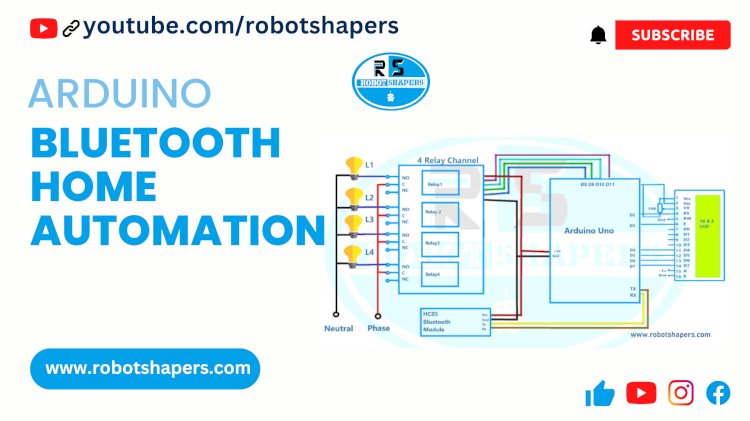
Bluetooth voice-activated home automation is a technology that allows homeowners to control all aspects of their home using voice commands and a Bluetooth connection. Through the system, users can interact with smart home devices and appliances without hands-on or remote control.
Homeowners can control lighting, set thermostats, manage security, and even control home entertainment such as TVs and stereos with voice commands. They can turn certain devices on or off or set routines to create a personalized and seamless lifestyle.
The Bluetooth voice-activated home automation system combines with smart speakers, smartphones or advanced control units, allowing users to control their home from anywhere in the area. The simplicity and ease of use provided by the voice command increases comfort, saves time and increases productivity. In addition, the system offers hands-free and intuitive home controls that can be used by many users, including those with reduced mobility or disabilities. Bluetooth voice-activated home automation turns the home into a smart, connected environment by providing new and convenient ways to manage and improve your living space.
Components required:
- Arduino Uno
- 4 Relay-channel
- 16x2 LCD
- HC05 bluetooth module
- bulbs (4nos)
- 220V AC power supply
- 5V DC power supply
4-Relay Channel :
A 4 Relay Board, also known as a 4 Channel Relay Module, is an electronic device that allows you to control multiple circuits or low voltage devices. It has four independent relay switches mounted on a circuit board.Each relay on the 4 relay board acts as a power switch. When the relay receives a control signal, it can open and close the circuit, allowing or preventing current from flowing to the connected equipment. This makes it versatile for automation, remote control, and home or business use.
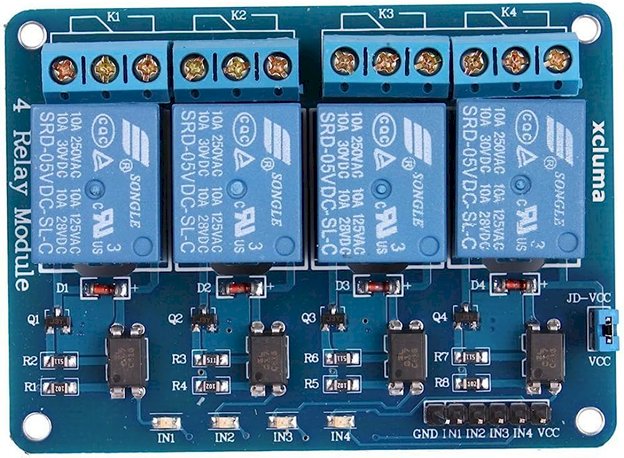
4 Relay boards are often associated with microcontrollers, Arduino boards or other control systems. It provides security by distinguishing between the low voltage control circuit and the high voltage control circuit, and prevents the control circuit from being damaged. The Board usually has LED indicators that show the status of each relay and make it easy to monitor changes. In addition, it often provides screw terminals or connectors for easy connection of cables or devices. With the 4-Way Relay Board, you can control many things such as lights, motors, pumps, solenoid valves or other devices. Its small size, ease of use and versatility make it useful for projects that require control and flexibility.
The Bluetooth module allows communication between the circuit and a Bluetooth-enabled device that acts as a controller, such as a smartphone or tablet.
HC05 Bluetooth Module:
The HC-05 is a popular Bluetooth module used for wireless communication in a variety of applications. Here are some details of HC-05 Bluetooth module:
- Function: The HC-05 module is designed to establish a wireless Bluetooth connection between devices. It can be a master or slave, allowing it to interact with other Bluetooth devices such as smartphones, tablets, computers and microcontrollers.
- Bluetooth version: The HC-05 module is based on the Bluetooth 2.0 + EDR (Enhanced Data Rate) specification. It supports various Bluetooth profiles, including the Serial Port Profile (SPP), which allows it to send and receive serial data.
- Communication Interface: The module uses a communication interface, usually UART (Universal Asynchronous Transceiver) to send and receive data. This makes it easy to connect with microcontrollers or other devices that support serial communication.
- Range: The HC-05 module has a maximum range of approximately 10 meters (30 feet) in an open environment. This range varies depending on the environment and affects the signal path.
- Operating Voltage: The module usually works at 3.3V, but its serial interface can tolerate 5V logic level.
Some models of this model may have a built-in generator that allows them to be used directly from the 5V supply. - Pairing and Configuration: The HC-05 module can be paired with other Bluetooth devices using a PIN code. By default, the PIN number is usually "1234" or "0000". The module can be configured using AT commands that allow you to change settings such as Bluetooth device name, baud rate and operating mode.
- Working mode: The HC-05 module supports various working modes, including data transmission and command mode. In data transfer mode, it acts as a transparent bridge, allowing data to be sent and received between connected devices. In command mode, AT commands can be used to configure the module.
- Compatibility: The HC-05 module is widely used with various microcontrollers and devices that support communication. It can be used with Arduino boards, Raspberry Pi and other development platforms.
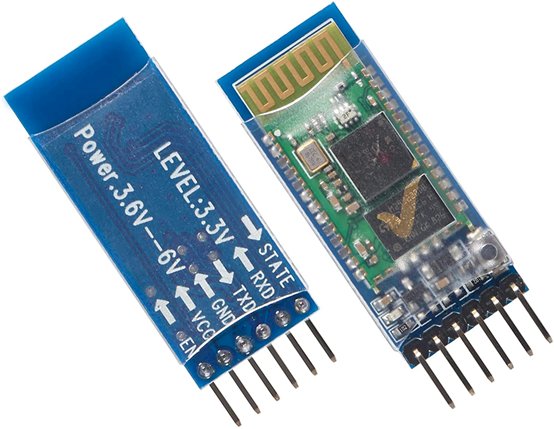
HC-05 Bluetooth modules usually have six pins, each with a specific purpose. Here are the details of the pins of the HC-05 Bluetooth module:
- VCC: This pin is used to power the module.
It must have a 3.3V power supply. Some models of this model can tolerate 5V, but 3.3V is generally recommended to prevent damage. - GND: The GND pin is the ground connection of the module. It must be connected to the ground of the circuit or power supply.
- TXD: The TXD pin is the transmit pin for serial communication. It is used to send data from the module to another device.
It must be connected to the receiver (RX) pin of the device you are communicating with. - RXD: The RXD pin is the receiver pin for serial communication. It is used to receive data from other devices. It must be connected to the transmit (TX) pin of the device you are communicating with.
- STATE: The STATE pin is optional and not always available on all HC-05 modules. If yes, indicate the current state of the Bluetooth module, such as whether it is in discoverable mode or connected to a device.
- EN (Enable): The EN pin is another optional pin that may or may not be available on all HC-05 modules.
If so, it is used to check the power status of the module. By putting a logic level high (eg 3.3V) you activate the module and pulling it low (eg 3.3V) you activate the module.
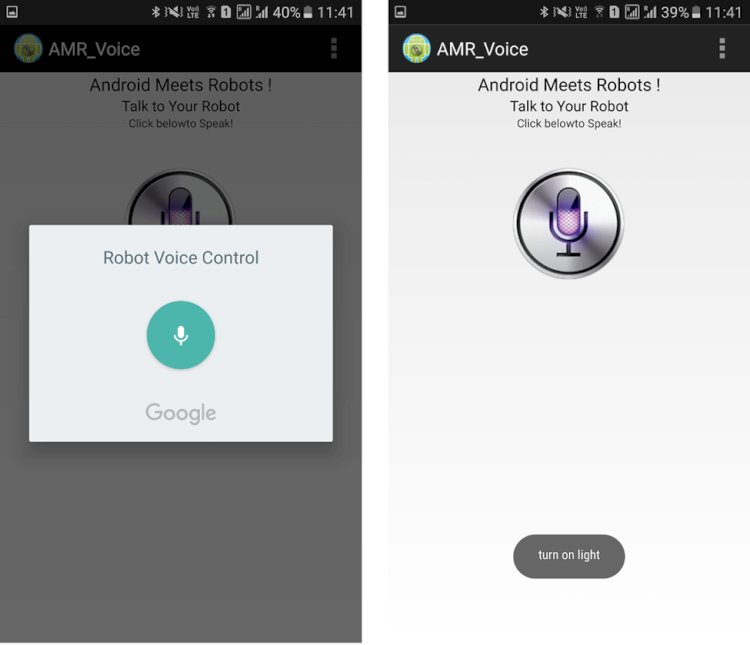
All you have to do is turn on bluetooth on your phone and pass the number "1234". After pairing, open the app, press the star icon and choose "Connect to Car", you will see "HC05" in the list, click on it and it will pair. Then you can control your robot with your phone by giving voice commands.
Circuit:
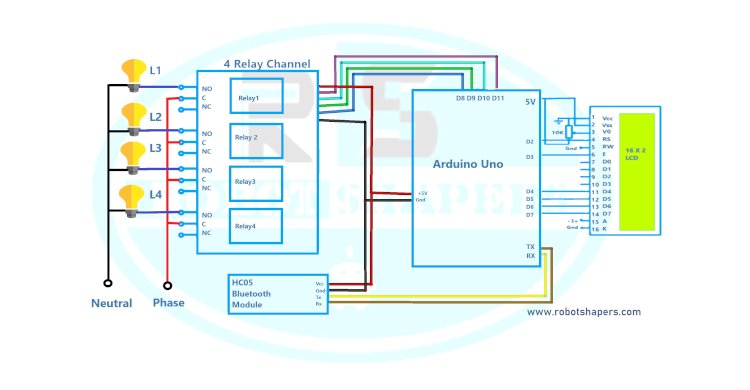
Code
#include
LiquidCrystal lcd(2, 3, 4, 5, 6, 7);
String voicecommand ;
#define Relay 1 8
#define Relay 2 9
#define Relay 3 10
#define Relay 4 11
void setup()
{
pinMode(Relay1,OUTPUT);
pinMode(Relay2,OUTPUT);
pinMode(Relay3,OUTPUT);
pinMode(Relay4,OUTPUT);
Serial.begin(9600);
lcd.begin(16, 2);
lcd.setCursor(0,0);
lcd.print("Robotshapers");
delay(1500);
lcd.clear();
lcd.setCursor(0,1);
lcd.print("Voice operated");
delay(1500);
lcd.setCursor(0,1);
lcd.print("Home Automation");
delay(1500);
lcd.clear();
lcd.setCursor(0,0);
lcd.print("Light-");
lcd.setCursor(9,0);
lcd.print("TV-");
lcd.setCursor(0,1);
lcd.print("Fan-");
lcd.setCursor(9,0);
lcd.print("AC-");
}
void loop()
{
delay(10);
while(Serial.available())
{
voicecommand = "";
voicecommand = Serial.readString();
Serial.print(voicecommand);
}
if(voicecommand == "*light on#")
{
digitalWrite(Relay1,HIGH);
lcd.setCursor(6,0);
lcd.print("ON ");
}
if(voicecommand == "*light off#")
{
digitalWrite(Relay1,LOW);
lcd.setCursor(6,0);
lcd.print("OFF");
}
if(voicecommand == "*tv on#")
{
digitalWrite(Relay2,HIGH);
lcd.setCursor(12,0);
lcd.print("ON ");
}
if(voicecommand == "*tv off#")
{
digitalWrite(Relay2,LOW);
lcd.setCursor(12,0);
lcd.print("OFF");
}
if(voicecommand == "*fan on#")
{
digitalWrite(Relay3,HIGH);
lcd.setCursor(4,1);
lcd.print("ON ");
}
if(voicecommand == "*fan off#")
{
digitalWrite(Relay3,LOW);
lcd.setCursor(4,1);
lcd.print("OFF");
}
if(voicecommand == "*ac on#")
{
digitalWrite(Relay4,HIGH);
lcd.setCursor(12,1);
lcd.print("ON ");
}
if(voicecommand == "*ac off#")
{
digitalWrite(Relay4,LOW);
lcd.setCursor(12,1);
lcd.print("OFF");
}
}
Applications:
Bluetooth voice-activated home automation has many applications that increase convenience, efficiency and smart home management.
- Lighting: Users can use voice commands to control the lighting, adjust the brightness level, turn the lights on or off, or adjust the lighting to create a desired ambiance.
- Climate Control: Commands allow homeowners to control thermostats, adjust temperature and manage HVAC systems to provide optimum comfort and energy efficiency.
- Home Security: Homeowners can use voice commands to enable or disable security, lock or unlock doors, and control surveillance cameras, providing convenient and easy-to-manage home security.
- Entertainment Control: Audio allows users to control home entertainment such as TVs, audio systems and media players, providing hands-free operation for uninterrupted entertainment.
Automation devices: Users can control various devices such as a coffee machine, oven, or washing machine to initiate or schedule a specific task. - Voice Activated Assistants: Integration with popular assistants such as Siri, Google Assistant or Amazon Alexa allows homeowners to control multiple devices and access information using commands.
- Accessibility and Smart Living: Bluetooth voice-activated home automation increases accessibility by enabling people with disabilities to voice control their living spaces and be independent.
- Energy Management: Users can achieve cost savings and safety by optimizing energy use by voice monitoring and control of energy use.
Best proects in Bhilai, Chhattisgarh, India. Contact : 7067150002
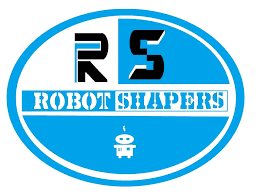
 robotshapers1
robotshapers1 


















